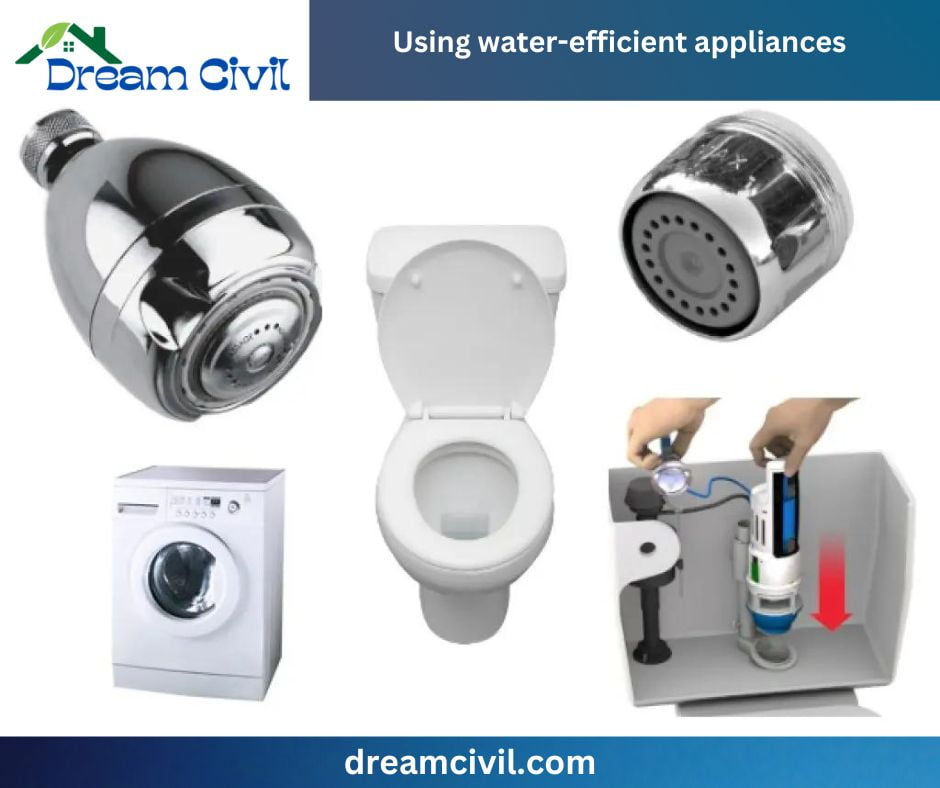Table of Contents
This is the Water Resource Management and Conservation article, where various Water Resource Management activities, conservation tips, and strategies are briefly explained below.
| Read More: Most Useful 20 Tools for Gardening |
A. What is Water Resource Management and Conservation?
✓ Water resource management and conservation are such kinds of policies, strategies, and activities aimed at ensuring sustainable use of water resources, protecting the water environment, and meeting present and future human demand.
✓ The amount of water used is influenced by population, household size, affluence, and growth.
✓ We must prioritize protecting and maintaining our water resources to ensure sustainable development and safeguard our environment.
✓ Due to population growth, urbanization, and climate change, freshwater availability is decreasing alarmingly.
✓ Therefore, it is essential to implement effective strategies for water resource management and conservation to guarantee a constant supply of clean water for various purposes while minimizing any negative impact on ecosystems and communities.
✓ Although this is a complex task, it is a necessary step toward securing a sustainable future. We can progress significantly by working together and preserving our water resources for generations.
B. Why water resource management and conservation is essential?
✓ Managing and protecting water resources is essential in providing a sustainable and equitable water supply for current and future generations.
✓ This requires implementing technological advancements, policy changes, educational programs, and behavioral adjustments to combat water scarcity and encourage responsible usage.
C. What is water resource management? What activities are included in it?
✓ Water resource management involves planning, developing, and effectively managing water resources. This process encompasses a range of activities, such as:
1. Water supply: The process of gathering, processing, and dispersing water for human consumption, industrial purposes, and agricultural irrigation is involved.
2. Water demand: It is crucial to accurately calculate the necessary amount of water for various activities such as drinking, cleaning, cooking, production, and farming.
3. Water quality: One crucial aspect is water safety for drinking and other uses. This involves treating wastewater and preventing pollution from entering bodies of water. Ensuring that water is safe and clean for everyone’s well-being is crucial.
4. Water allocation: Determining water allocation among various users, including agriculture, industry, and the environment, is an imperative decision in water management.
D. What is water conservation? How can we conserve water?
✓ Water conservation means using it more efficiently and reducing wastage.
✓ It’s an essential part of managing water resources, ensuring enough water to meet the needs of people and the environment.
✓ Conserving water means minimizing water usage by repairing leaks, utilizing appliances that consume less water, and collecting rainwater. There are various ways and solutions to save water, such as:
1. Fixing leaks:

It’s important to promptly address leaks in your home or workplace, as they can produce much-wasted water. Don’t hesitate to fix any leaks you find.
2. Using water-efficient appliances:

You can use numerous water-efficient appliances, such as low-flow toilets and showerheads.
3. Taking shorter showers:

Taking shorter showers can help save a significant amount of water. Limiting your shower time to no more than 5 minutes is recommended.
4. Turning off the faucet on brushing your teeth or washing your hands:

It’s a good idea to turn off the tap while brushing your teeth or washing your hands, as this can save several gallons of water each time.
5. Watering your lawn less often:

Water your lawn deeply but less frequently for a more drought-tolerant property.
6. Harvesting rainwater:

Collecting and storing rainwater for future use is known as rainwater harvesting. It can serve various purposes, such as watering your lawn or garden or washing your car.
E. What are the advantages of water resource management and conservation?
Discover the advantages of managing and conserving water resources:
✓ It Ensures a sustainable water supply for human needs and the environment.
✓ It helps to reduce water pollution and contamination included in the water.
✓ It gives better protection for water resources from over-exploitation.
✓ It enhances water efficiency and lowers water costs.
✓ It generates jobs and stimulates economic growth.
✓ It improves the quality of public health and well-being.
F. What are the key concepts and strategies of water resource management?
Here are some key concepts and strategies related to water resource management and conservation:
1. Water Scarcity and Stress:
✓ Water scarcity is a global issue in many regions where demand surpasses the available supply.
✓ When water needs to exceed 40% of the pool, it results in water stress, leading to social, economic, and environmental challenges, starvation, and anxiety.
2. Integrated Water Resource Management (IWRM):
✓ The IWRM approach considers all aspects of water resources, including social, economic, and environmental factors.
✓ It aims to ensure that the development and management of water, land, and related resources are done in a coordinated way that maximizes economic and social benefits while maintaining sustainability for the long term.
3. Efficient Water Use:
✓ Conservation can be achieved by enhancing water use efficiency by reducing wastage.
✓ This can be done by implementing better infrastructure, technologies, and practices in agriculture, industry, and domestic settings.
4. Rainwater Harvesting:
✓ Gathering and preserving rainwater for irrigation, household consumption, and replenishing groundwater can alleviate the demand for conventional water sources.
5. Wastewater Treatment and Reuse:
✓ Reusing and treating wastewater is a great way to increase water availability.
✓ On the extent of treatment, wastewater can be used for various purposes, such as irrigation, industrial processes, and drinking water.
6. Desalination:
✓ The process of desalination involves the removal of salt and other impurities from seawater, resulting in the production of fresh water.
✓ Although it is a valuable method for augmenting water supply in coastal regions, it can be expensive and require high energy.
7. Ecosystem Conservation:
✓ The preservation of healthy ecosystems is paramount in ensuring the quality and availability of water.
✓ Protecting and restoring wetlands, forests, and other natural habitats can effectively regulate water cycles and prevent erosion.
8. Policy and Regulation:
✓ Transparency policies, regulations, and governance structures must exist to manage water resources effectively.
✓ This may involve implementing water allocation systems, establishing water pricing mechanisms, and enforcing regulations on water usage.
9. Public Awareness and Education:
✓ Increasing awareness of the significance of water conservation and encouraging responsible water usage practices among individuals, communities, and industries can aid in achieving long-term sustainability.
10. Research and Innovation:
✓ By investing in research and technological innovation, the potential for creating revolutionary water-saving technologies such as efficient irrigation systems, leak detection tools, and water-saving appliances can be realized.
11. Climate Change Adaptation:
✓ Climate changes can significantly impact water resources due to changes in precipitation patterns and increased evaporation.
✓ It may be necessary to modify infrastructure, diversify water sources, and plan for extreme weather conditions to adapt to these changes.
12. International Cooperation:
✓ It is common for several countries to share water resources.
✓ To effectively manage these resources, it is necessary to collaborate internationally, negotiate agreements, and work together to address them.

